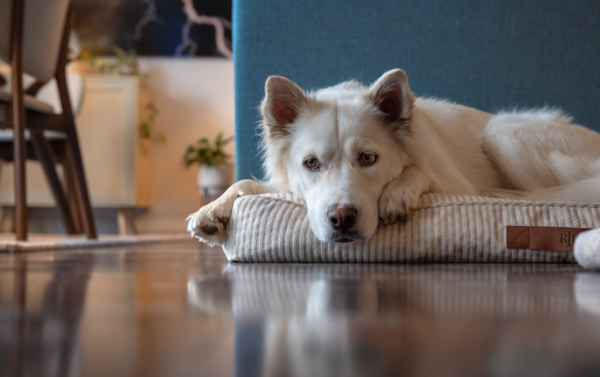
Dogs have been around for thousands of years and before they embarked on the long journey to domestication, they lived their entire lives in packs. Members of a pack are always together. They are surrounded by their family 24/7 which means that they hunt, sleep, eat, play, and explore together. That is their natural state and pack instinct is a real thing – they need to be with their family.
Since their domestication, some dogs may have dialed down on their pack instincts while others retain their strong need to always have someone with them. It is important to understand that our way of life isn’t entirely normal to them as it is the opposite of theirs. We have become their providers, pack leaders, and parents, and we leave them alone for most of the day which is unusual for them. Leaving their side is the fuel that sparks separation anxiety in dogs.
Table of Contents
What is separation anxiety in dogs?
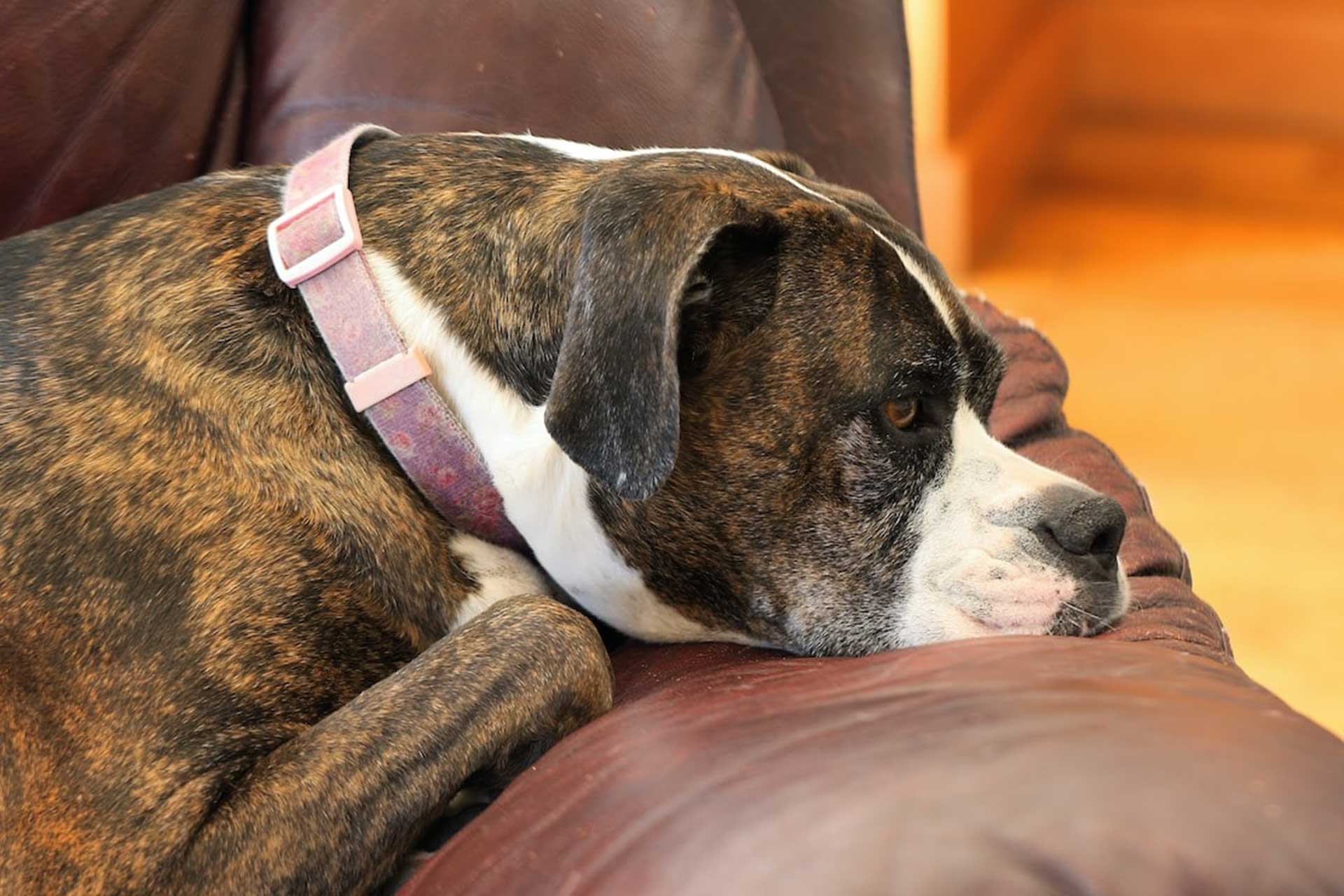
Separation anxiety is a state of distress in which a dog enters when he or she is fearful of being left alone or separated from his or her human/s. A dog that is suffering from separation anxiety goes through 100 feelings when left alone. He/she feels sad, angry, vengeful, abandoned, panicked, and in a constant state of alert.
Separation anxiety is a serious condition most dogs go through and although it is very common, there is no “quick fix” or “by the book” method of curing it. There are however methods that have proven successful in combating this issue even in the most severe cases of separation anxiety.
What causes separation anxiety in dogs?
There are many speculations as to why dogs develop separation anxiety and apart from their primal pack instincts that they have retained since before their domestication, they may experience this as a result of abandonment, a traumatic experience, or simply because they have bonded so closely to their owner. In some cases, separation anxiety is a result of “small dog syndrome” which happens when a dog is overly spoiled.
Signs your dog might be suffering from separation anxiety
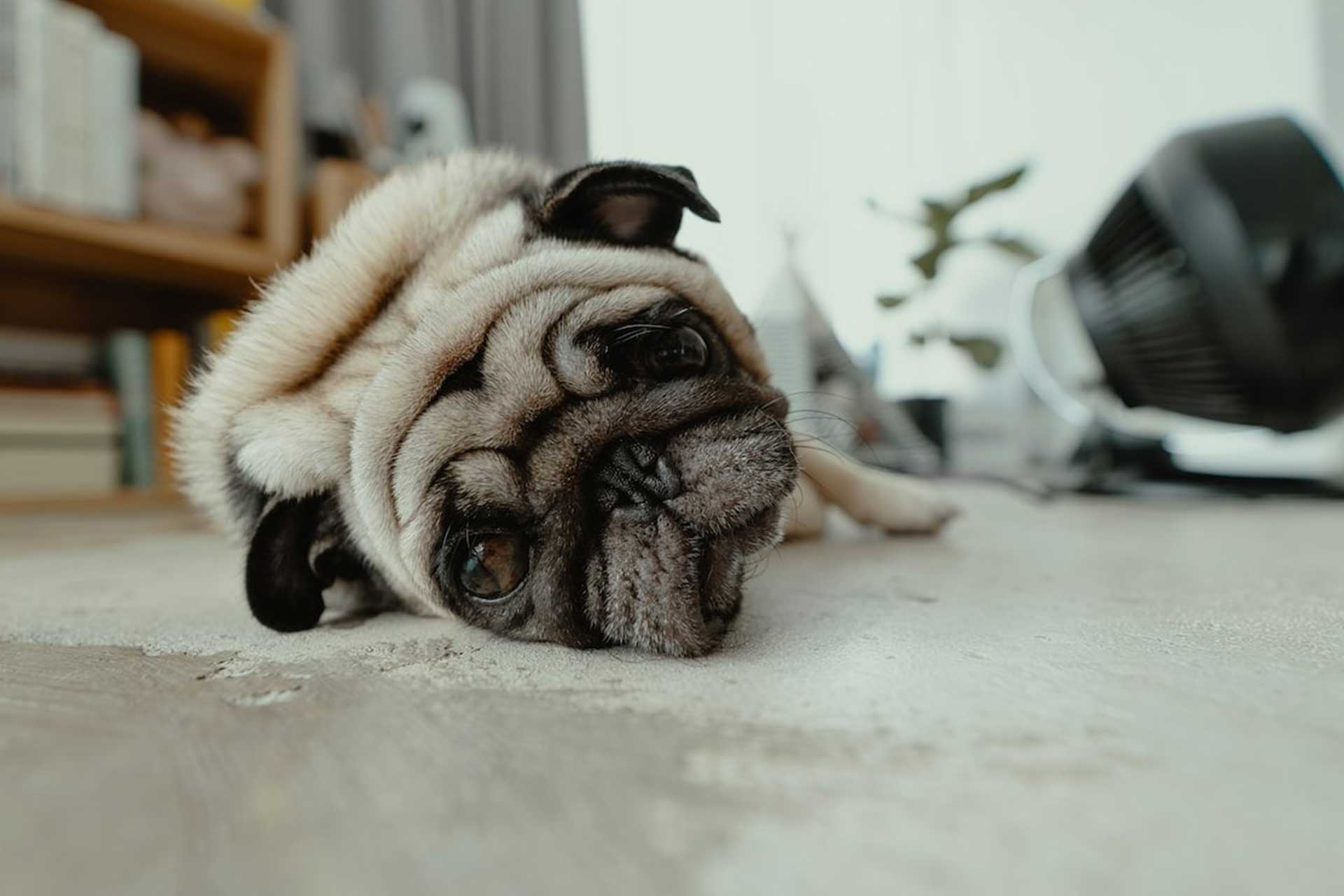
Separation anxiety manifests in a lot of ways and it’s important to identify those patterns/signs early on in order to protect your dog from a mountain of stress every time you leave their sight. When dogs become distressed, they start behaving differently and this generally happens when your reach for your keys, jacket, purse, or in some cases, when you start thinking about leaving. Dogs are very smart creatures that can pick up on your mood and body language. Dogs can also tell time so they often learn your schedule and anticipate when you are about to leave.
Signs your dog has separation anxiety:
- When you are home, your dog follows you everywhere incisively and only naps glued to you.
- When you are about to leave, you may notice that your dog is panting, whining, going in circles around you, drooling more than usual, becomes more agitated, has sweaty paws, or is hyper-attached to you shadowing you everywhere.
- When you are away from home, your dog displays destructive behavior like excessive barking/howling, chewing everything in sight, clawing/scratching at the window, digging at the door, or going potty everywhere.
Tips to help cure separation anxiety in dogs

The first thing to keep in mind when starting the process of combating separation anxiety is that it takes time and effort and requires baby steps, patience, and perseverance. You need to take the time to build up your dog’s independence and teach him/her that you leaving is just a temporary situation – a thing of little importance that happens daily.
Here are a few tips on how to do this:
1. Refocus your dog’s attention and establish a non-important routine
Like we mentioned earlier, dogs start to exhibit signs of anxiety the moment their owners grab their keys to head out. This happens because dogs associate certain objects with their owner getting ready to leave. To alleviate this stressful association, you need to casually take your keys, briefcase, or purse, put on your shoes and jacket and simply walk around the house or sit on the couch without the intention of leaving.
Do this a few times every day starting with your keys alone, then gradually add the other objects that are part of your leaving routine. Treat this as something that you casually do throughout the day – like taking a plate from the table and putting it in the sink. While you do this exercise, give your dog a chew toy or a ball to play with.
You will notice that at first, your dog will pay no attention to the toy, but as he/she gets used to those objects being part of a normal everyday routine, the toy will become more and more appealing. Your dog will eventually break the association between the object and the action of you leaving and will begin seeing it as a routine of little to no importance.
2. Teach your dog to stay
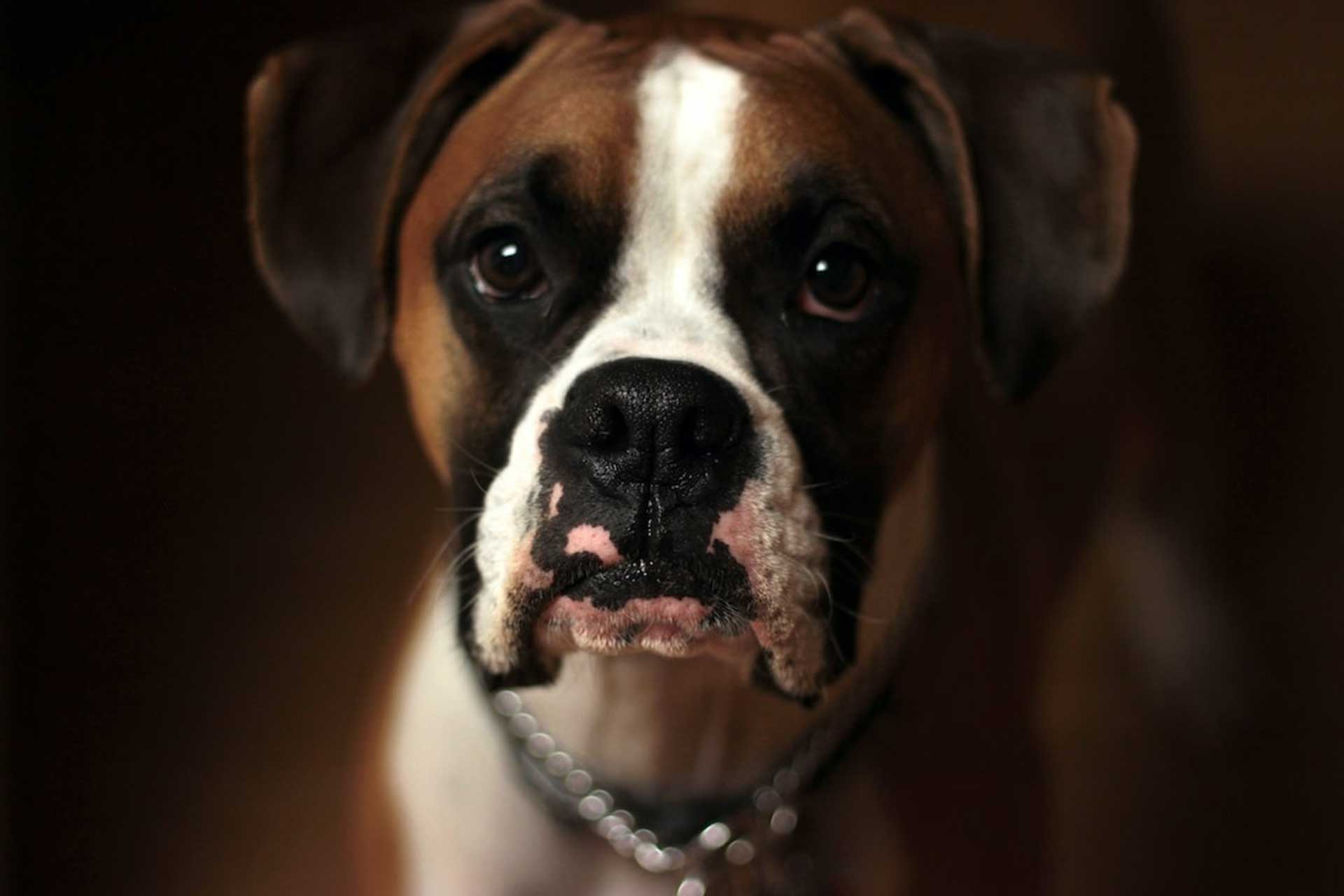
Teaching your dog to stay is a great way to practice distancing and begin separation training. Dogs that are hyper-attached to their owners tend to shadow their every move. To help with this, put your dog in the sit position then ask them to stay and take one step back. If your dog hasn’t moved from the stay position, reward him/her with a delicious treat and repeat this exercise a few times every day while gradually increasing steps until you are able to go into the next room without your dog following you.
3. Practice leaving the house
Once your dog has learned the stay command which teaches him/her that it’s ok for you to be out of their sight, you can move on to practice going out the front door. This exercise works on the same principle as getting your dog comfortable with you being out of their sight, except that, with this exercise, you are not rewarding him/her to stay, but rather acting as if this is a situation of no importance.
To begin this exercise, simply stand up and walk towards the door without exiting and then return to sit on the couch. It’s important that during this exercise, you don’t pay attention to your dog or address him/her in any way. Simply act as if this is just something that you felt like doing. At first, your dog will have the instinct to get up and follow you, possibly even become agitated. Do this until your dog gives it no reaction, then gradually add your keys or shoes to the equation. Repetition is key in this exercise.
Once your dog is comfortable with you taking your keys and heading to the door, open and close the door for a moment then resume your place on the couch. Again, do this several times until there is no reaction from your dog. To move on, you can add exiting the house for a few seconds, then gradually increasing the time as your dog gets comfortable.

To make sure this works without creating adverse side effects, practice being out of the house for 5 seconds, then for 2 seconds, followed by 7 seconds, always alternating between increasing and decreasing time spent outside. The best way to do this is to keep a progress chart and go by it every day. It is also very important to stick to the time frame your dog is comfortable with and not push it until he or she is ready.
For example, if your dog is comfortable with being alone for 2 hours and you leave for 4, chances are you will undo all of your hard work as your dog will likely start to suffer from anxiety again. When you have reached the point in which you can safely leave the house for a full workday, practice leaving in a casual indifferent way as your dog will pick up on your mood and body language if you become worried or anxious.
Also, when you return home, try to be as neutral as possible without acting in a hyper fashion towards your dog.
Keep in mind that this exercise is a time-consuming one that requires a lot of patience and repetition.
As the saying goes – hard work pays off, indeed it does as this exercise has been proven to be one of the most effective ways to treat separation anxiety in dogs.
Example of Progress Chart for Separation Anxiety Exercise
| Week 1 | Week 2 | Week 3 | Week 7 | Week 12 |
|
2 seconds 5 seconds 3 seconds 7 seconds 2 seconds 10 seconds 8 seconds |
10 seconds 7 seconds 15 seconds 11 seconds 18 seconds 15 seconds 20 seconds |
21 seconds 17 seconds 30 seconds 28 seconds 15 seconds 40 seconds 36 seconds |
1 minute 50 seconds 2 minutes 1 min 10 sec 2 min 30 sec 2 min 20 sec 3 minutes |
2 hours 1hr 45 min 2 hr 30 min 2 hr 30 min 3 hours 3 hr 10 min 2 hr 50 min |
4. Add toys and puzzles to the mix
Your dog has now reached the point where she or he is comfortable with some time alone. To make this an even easier experience for them, you can add kong toys, puzzle games, squeaky toys, or any interactive toys you can find that will keep them busy while you are away. For this, you need to make sure that you only give your dog these toys when you leave the house so your dog will have something to look forward to. Your dog will learn to associate that delicious peanut butter kong with you leaving the house. Make sure to rotate the toys to keep it interesting for your dog.
5. Crate train your dog
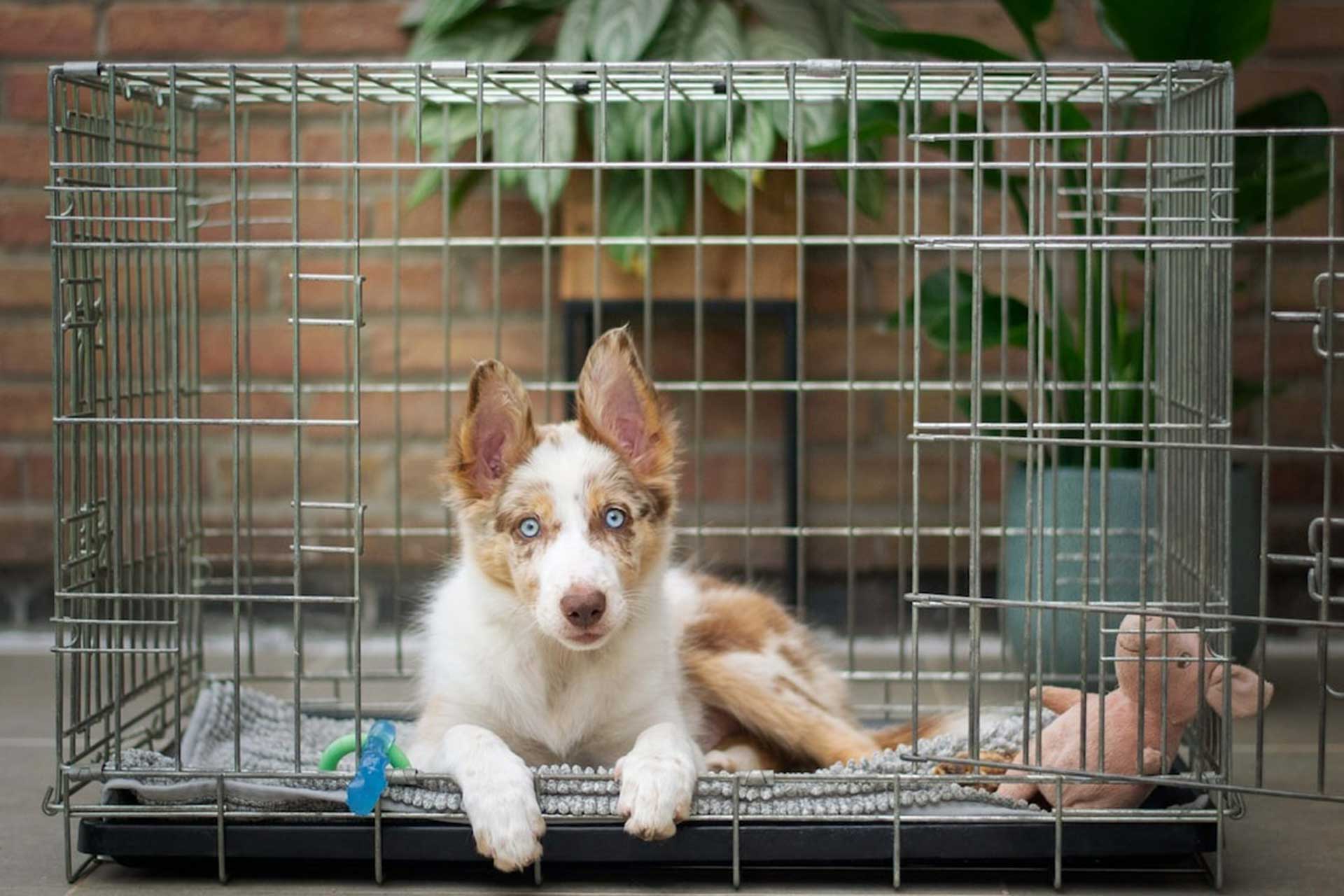
Crate training can be an effective method/tool when dealing with a dog that is suffering from separation anxiety. It gives your dog a safe place to call his/her own and prevents them from engaging in destructive behavior around the house. Keep in mind that dog crates are not for everyone. Some dogs will openly accept a crate as their safe place, while others might hate them and possibly injure themselves trying to get out.
Never force your dog into a crate and do not use the crate as punishment. Also, never stick your dog into a crate before leaving the house without proper training beforehand as this will most likely traumatize him/her and cause severe anxiety.
To safely crate train your dog, bring the new crate home and simply leave it hanging around for a few days as a new piece of furniture. Your dog will investigate on his/her own and get accustomed to it without any effort on your part. Once your dog accepts it as part of the setting, you can add his toys or some treats inside and wait for him to collect them on his own terms. Once he is inside, take a seat next to his crate and watch a show, play on your phone or simply stay there with him comfortably, treating the situation as indifferently as possible.
Do not close the door until you feel that your dog is comfortable enough for that. Once he is showing signs that he might be ok with it, close and open the door for a brief moment, gradually increasing the seconds in which you keep it closed. As long as you stay near the crate, your dog will learn to be comfortable in it.
To move on, you can take a few steps away from the crate when he is inside and spend some time there relaxing. You can gradually increase the time and distance as your dog gets comfortable. Keeping a cool and indifferent attitude will help ease your dog’s anxiety and help him transition into a calmer, more relaxed state.
6. Meet your dog’s needs before you leave
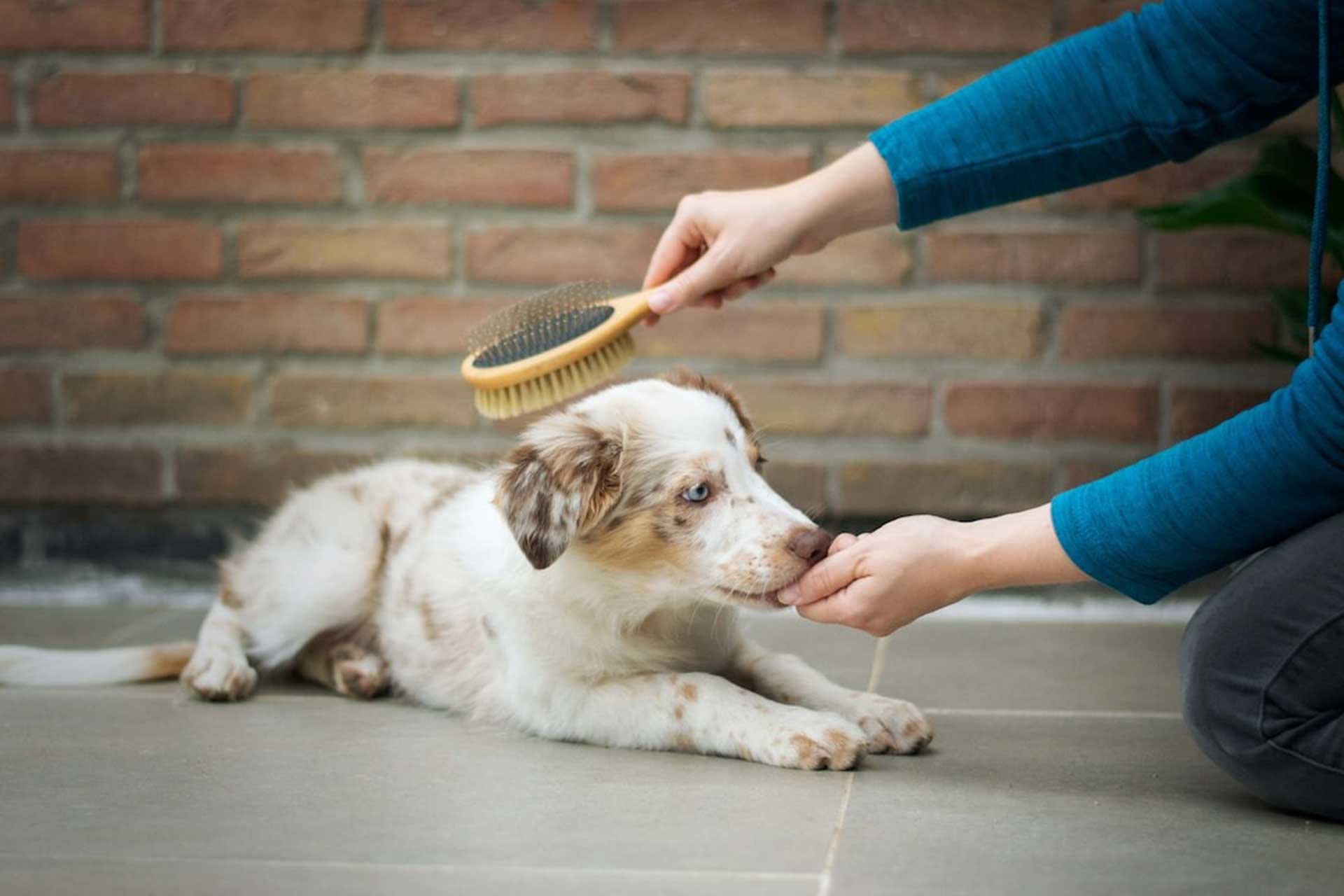
Stress factors that can cause separation anxiety and the destructive behaviors that come with it include hunger, boredom, underexercising, and the need to go potty. Before you leave home, you need to make sure that your dog is walked, properly exercised, and fed, and that he/she has fresh water available and toys to keep busy with.
A dog that is not exercised before being left alone will transfer all that energy into destructive behaviors like attempts to escape, digging, chewing furniture, and so on. On the other hand, a dog that is properly exercised right before being left alone is more likely to be tired and choose to relax and nap rather than do anything suspicious to your shoes.
7. Talk to your vet
Some dogs experience severe separation anxiety that is very hard to train out of. In these cases, the best course of action is to talk to a vet. Your dog’s doctor knows best and can prescribe separation anxiety treatments like anti-depressants, mild sedatives, or calming medication, refer you to a dog therapist or recommend an animal behaviorist or professional trainer that is experienced in dealing with severe separation anxiety in dogs.
Scroll down to see FAQs about separation anxiety in dogs!
What To Read Next
Navigating the World of Puppy Teething: A Guide for Owners
How To Potty Train A Puppy
Frequently Asked Questions
What is dog separation anxiety and how can I identify it? Dog separation anxiety is a condition where dogs become distressed due to separation from their human guardians, often leading to disruptive behavior. Symptoms include excessive whining, howling, chewing, and excessive barking. Dogs with separation anxiety may also try to prevent their guardians from leaving, and they may attempt to escape from where they have been confined.
How can I create a safe space for my dog with separation anxiety? You can create a safe space for your dog by setting up a specific room or area in your house where your dog feels secure and comfortable. This space should have items that your dog associates with comfort and relaxation, such as their favorite toys, blankets, and a comfortable bed.
How can interactive toys and puzzles help with dog separation anxiety? Interactive toys and puzzles are a great way to keep your dog occupied while you are not around. They provide physical and mental stimulation for dogs, helping to distract them from their anxiety and prevent destructive behavior.
Can training help with my dog's separation anxiety? Yes, training can be very effective in managing your dog's separation anxiety. One method is to train your dog to become comfortable with being alone. Start by leaving them alone for a few minutes at a time, and slowly increase the duration. Over time, your dog can learn that being alone is not something to be afraid of.
When should I seek professional help for my dog's separation anxiety? If your dog's separation anxiety is severe or if your own efforts to manage it are not successful, it may be time to seek professional help. A professional can provide guidance and help you implement strategies to effectively manage your dog's anxiety, which can improve your dog's quality of life and make things easier for everyone.



